
BMC MICROBIOLOGY
Scope & Guideline
Innovating the future of microbiology, one study at a time.
Introduction
Aims and Scopes
- Microbial Ecology and Diversity:
The journal publishes studies on the diversity, distribution, and ecological roles of microorganisms in various environments, including soil, water, and human-associated microbiomes. - Clinical Microbiology and Infectious Diseases:
Research focused on the characterization, resistance mechanisms, and epidemiology of pathogenic microorganisms, particularly those relevant to human health, is a significant area of focus. - Antimicrobial Resistance:
Papers addressing the mechanisms, prevalence, and implications of antimicrobial resistance in various bacterial species, especially those affecting human health, are commonly featured. - Biotechnological Applications:
The journal highlights research on the use of microorganisms in biotechnological applications, including bioremediation, production of bioactive compounds, and probiotics. - Molecular Microbiology and Genomics:
Studies employing molecular techniques, including genomics and transcriptomics, to uncover the genetic basis of microbial behavior, resistance, and pathogenicity are integral to the journal's content. - Microbe-Host Interactions:
Research examining the interactions between microbes and their hosts, including studies on the gut microbiome and its effects on health and disease, is a prominent theme. - Emerging Pathogens and Zoonotic Diseases:
The journal also addresses the emergence of new pathogens, including zoonotic infections, and their implications for public health.
Trending and Emerging
- Microbiome Research:
There is a growing emphasis on the role of microbiomes in health and disease, particularly gut microbiota's impact on metabolic disorders, immunity, and chronic diseases. - Antimicrobial Resistance Mechanisms:
Research exploring the mechanisms behind antimicrobial resistance, including genetic determinants and their transmission, has gained significant attention, highlighting the urgent need to tackle this global health crisis. - Phage Therapy and Alternatives to Antibiotics:
The exploration of bacteriophages and other alternatives to traditional antibiotics for treating resistant infections is a burgeoning area of research, reflecting the need for innovative solutions to combat resistance. - Microbial Bioprospecting:
Studies focusing on the discovery and characterization of novel microbial species with potential biotechnological applications, including biocontrol agents and probiotics, are increasingly prominent. - Environmental Microbiology and Bioremediation:
Research aimed at understanding microbial roles in environmental processes and their potential for bioremediation of pollutants is an emerging focus, driven by global environmental challenges. - Host-Microbe Interactions:
There is a notable trend towards understanding the complexities of host-microbe interactions, especially in the context of diseases like obesity, diabetes, and infections. - Metagenomics and Multi-Omics Approaches:
The use of metagenomic and multi-omics methodologies to explore microbial communities and their functions in various environments is a rapidly growing area, offering new insights into microbial ecology.
Declining or Waning
- Traditional Microbial Taxonomy:
Research focused solely on traditional taxonomic classifications without integrating molecular techniques has decreased, as the field has moved towards more comprehensive genomic and metagenomic approaches. - Basic Laboratory Techniques:
Papers solely detailing basic laboratory methods without novel applications or insights have waned, as the focus has shifted to studies with significant implications for understanding microbial behavior and interactions. - Single-Species Studies:
Research centered on single-species studies without considering the broader ecological context or interactions with other microorganisms has become less common, reflecting a trend towards more integrative approaches. - Non-Pathogenic Microbial Studies:
While still relevant, studies focusing exclusively on non-pathogenic microorganisms without clear applications or implications for health or industry have seen reduced publication frequency.
Similar Journals
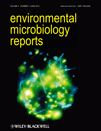
Environmental Microbiology Reports
Exploring the Microbial World of Environmental InteractionsEnvironmental Microbiology Reports, published by WILEY, is a prestigious journal dedicated to the field of environmental microbiology, exploring the intricate interactions between microorganisms and their environments. With an ISSN of 1758-2229, this journal has established itself as a crucial resource for researchers, professionals, and students interested in the latest advancements and applications in microbial ecology, soil science, and environmental sustainability. Since its inception in 2009, the journal has grown in impact and reputation, proudly ranked in the Q1 category for both Agricultural and Biological Sciences and Ecology, Evolution, Behavior and Systematics as of 2023. Notably, it occupies the 17th position out of 193 in its subcategory based on Scopus rankings, showcasing its significance within the field. Although it does not currently offer open access options, the high-quality research published in this journal continues to contribute significantly to the understanding of microbial roles in environmental processes, emphasizing the vital role of microbes in maintaining ecosystem health and promoting sustainable practices.

Malaysian Journal of Microbiology
Advancing Microbial Knowledge for a Healthier TomorrowMalaysian Journal of Microbiology is a prestigious open-access journal dedicated to advancing the field of microbiology, published by the Malaysian Society for Microbiology. Since its inception in 2005, this journal has become an essential platform for researchers and practitioners, facilitating the dissemination of innovative studies in applied microbiology, biotechnology, and infectious diseases. Based in Penang, Malaysia, this journal not only focuses on local microbiological research but also positions itself within the broader global scientific community. Although currently placed in the Q4 category in several relevant fields—including Applied Microbiology and Biotechnology, Infectious Diseases, and Medical Microbiology according to the 2023 Scopus rankings—it plays a crucial role in encouraging novel research and fostering collaboration among scientists. The journal encourages submissions that contribute to the understanding of microbial processes, disease mechanisms, and novel biotechnological applications, thereby supporting the continuous growth of knowledge in microbiology. With open access since its launch, the Malaysian Journal of Microbiology ensures that all published works are freely available to the public, enhancing their visibility and impact within the scientific community.
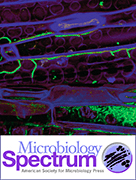
Microbiology Spectrum
Exploring the vast landscape of microbial science.Microbiology Spectrum is a prominent peer-reviewed journal published by the American Society for Microbiology, dedicated to advancing the field of microbiology through the dissemination of high-quality research. Since its inception in 2013 and continuing until 2024, the journal has established a strong presence in key domains such as microbiology, immunology, cell biology, and ecology, achieving impressive quartile rankings including Q1 in Infectious Diseases and Q1 in Immunology and Microbiology as of 2023. With an emphasis on open access to its scholarly content, Microbiology Spectrum aims to foster collaboration and knowledge sharing among researchers, professionals, and students alike. The journal's scope encompasses a diverse range of topics pertinent to the field, making it an essential resource for anyone involved in microbiological research and its applications. Researchers looking to publish their findings in a respected journal will find Microbiology Spectrum's robust impact factor and Scopus rankings serve as testament to its significance and influence within the academic community.

MICROBIOLOGY
Advancing the Frontiers of Microbial ScienceMICROBIOLOGY (ISSN: 0026-2617, E-ISSN: 1608-3237), published by MAIK NAUKA/INTERPERIODICA/SPRINGER, is a pivotal journal in the field of microbiological research, operating from the vibrant hub of New York, United States. With a focus on the intricate relationships and functionalities of microorganisms, MICROBIOLOGY serves as an essential resource for professionals and researchers dedicated to advancing the knowledge of applied microbiology and biotechnology. As of 2023, it holds a competitive Q3 and Q4 category ranking in Applied Microbiology and Biotechnology and Microbiology, respectively, reflecting its commitment to high-quality and impactful research. Although currently not open access, the journal extends comprehensive insights into critical topics that span environmental microbiology, clinical applications, and biotechnology advancements, making it a vital platform for disseminating innovative findings in this ever-evolving discipline. Researchers and students alike will find MICROBIOLOGY to be an invaluable addition to their academic and professional repertoire.
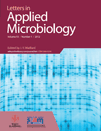
LETTERS IN APPLIED MICROBIOLOGY
Advancing the Frontiers of Microbial ScienceLETTERS IN APPLIED MICROBIOLOGY, published by OXFORD UNIVERSITY PRESS, is a prominent journal in the field of applied microbiology, serving as an essential platform for researchers and professionals to disseminate innovative findings. With an ISSN of 0266-8254 and an E-ISSN of 1472-765X, this peer-reviewed journal has been contributing to the scientific community since 1985 and continues to engage with cutting-edge research through 2024. With its current Scopus ranking placing it in the 45th percentile of its category, specifically at rank #70 out of 127 in the Applied Microbiology and Biotechnology field, it underscores its significance in advancing knowledge and applications pertinent to microbial science. Although it is not open access, LETTERS IN APPLIED MICROBIOLOGY offers comprehensive insights aimed at enhancing the understanding of microbiological phenomena in practical scenarios, making it a valuable resource for both seasoned experts and emerging scholars.
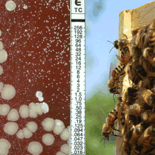
mBio
Unlocking groundbreaking discoveries in microbiology and virology.mBio is a premier, peer-reviewed open-access journal published by the American Society for Microbiology, dedicated to advancing the field of microbiology and virology. With an impressive impact factor and a commendable standing within the top quartiles (Q1) of both microbiology and virology categories as of 2023, mBio offers a dynamic platform for researchers and professionals to disseminate high-quality, rigorous scientific findings. Since its inception in 2010, it has served as a vital resource for the global scientific community, facilitating open access to groundbreaking research that spans diverse topics within microbiology. With a Scopus ranking of #28 out of 182 in Microbiology and #16 out of 80 in Virology, mBio significantly influences ongoing research trends and informs best practices in the field. Its commitment to open-access publishing allows for widespread visibility and accessibility, ensuring that critical discoveries reach a broad audience, including students and academics eager to contribute to, and learn from, cutting-edge science.

ANNALS OF MICROBIOLOGY
Exploring the depths of microbiology for a sustainable future.ANNALS OF MICROBIOLOGY is a prestigious journal dedicated to advancing the field of microbiological research, published by BMC, renowned for its commitment to providing open access to vital scientific findings. With its ISSN 1590-4261 and E-ISSN 1869-2044, this journal provides a platform for the dissemination of high-quality research since its inception in 1997. Renowned for its rigorous peer-review process, it has attained a commendable Q2 ranking in the Applied Microbiology and Biotechnology category in 2023, reflecting its significant contributions to the discipline. Positioned within the 67th percentile among its peers in Scopus rankings, ANNALS OF MICROBIOLOGY continues to facilitate the exchange of innovative ideas and methodologies, serving as an essential resource for researchers, professionals, and students alike. The journal covers a broad spectrum of topics, emphasizing the intersection of microbiology with applied sciences, thereby fostering an environment that encourages collaboration and advancement in this vital field. Scholars seeking to stay at the forefront of microbiological studies will find ANNALS OF MICROBIOLOGY an invaluable addition to their academic pursuits.

JOURNAL OF MICROBIOLOGY
Pioneering discoveries in applied microbiology and beyond.JOURNAL OF MICROBIOLOGY, published by the Microbiological Society Korea, is a prestigious peer-reviewed journal dedicated to the advancement of knowledge in the fields of microbiology, applied microbiology, and biotechnology. Established in 1996, this journal serves as a vital platform for researchers and professionals from around the globe to disseminate their findings and engage in multidisciplinary discussions pertaining to microbial sciences. With an H-index that reflects its impact, the journal holds a commendable Q2 ranking in key categories including Applied Microbiology and Biotechnology, as well as Medicine (Miscellaneous), which underscores its significance in the academic community. Despite being a subscription-based journal, the JOURNAL OF MICROBIOLOGY aims to contribute to the understanding of microbial processes and their applications, facilitating advancements that are essential in health, industry, and environmental sciences. Researchers, students, and practitioners are encouraged to explore this rich resource for the latest research and trends in microbiology.
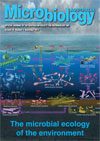
Microbiology Australia
Advancing Knowledge in Microbiology for a Healthier FutureMicrobiology Australia is a prominent journal published by CSIRO PUBLISHING, focusing on the diverse and rapidly evolving field of microbiology. Since its transition to Open Access in 2021, it has broadened its accessibility, fostering greater dissemination of research findings among scholars and practitioners. The journal features a range of topics that are pivotal for understanding microbial systems in applied microbiology, medical microbiology, public health, and environmental applications. Despite its current categorization in the Q4 quartile across several categories, it remains an essential platform for emerging research and innovative methodologies. Researchers and professionals can benefit from the journal's commitment to enriching the global discourse on microbiological advancements. With its ISSN 1324-4272 and E-ISSN 2201-9189, Microbiology Australia caters to a wide audience in Australia and beyond, making significant strides in bridging the gap between research and practical applications in microbiology.
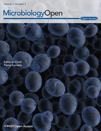
MicrobiologyOpen
Elevating microbiological discourse through shared knowledge.MicrobiologyOpen is a prestigious, open access journal published by WILEY, dedicated to advancing the field of microbiology. Since its inception in 2012, this journal has firmly established itself as a significant platform for researchers, professionals, and students alike, facilitating the dissemination of high-quality research findings across a wide range of microbiological disciplines. With an impressive impact factor and a ranking in the 76th percentile of Scopus for immunology and microbiology, MicrobiologyOpen offers a robust forum for innovative studies, reviews, and compelling insights that push the boundaries of scientific understanding. The journal's commitment to open access ensures that groundbreaking research is freely available to the global community, fostering collaboration and knowledge-sharing. As it continues to evolve until 2024, MicrobiologyOpen remains pivotal for anyone looking to stay at the forefront of microbiological research.